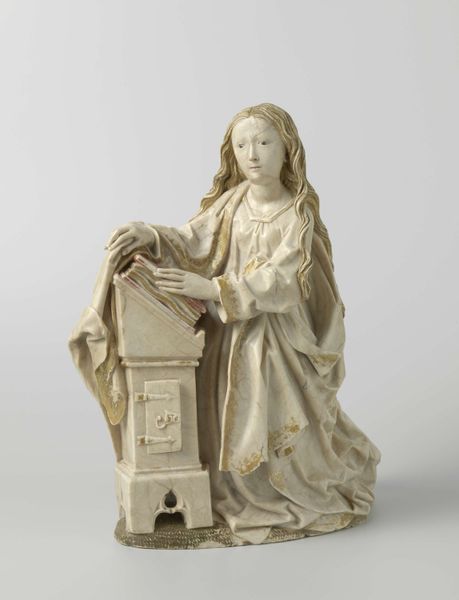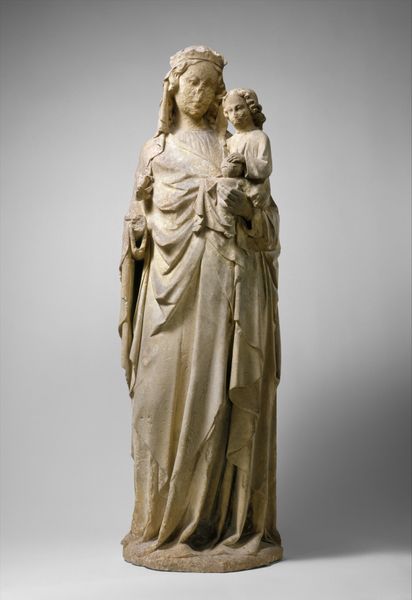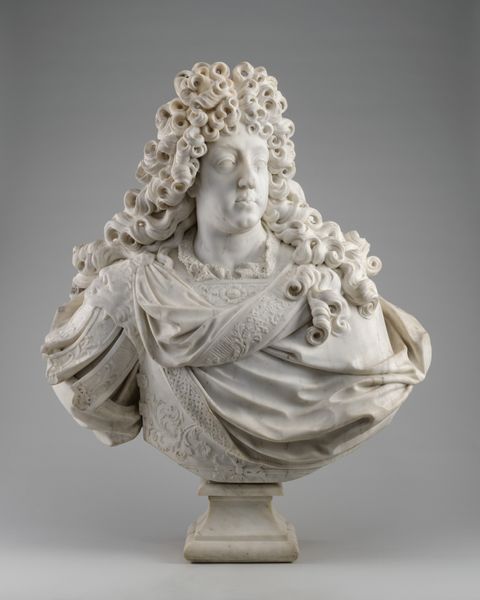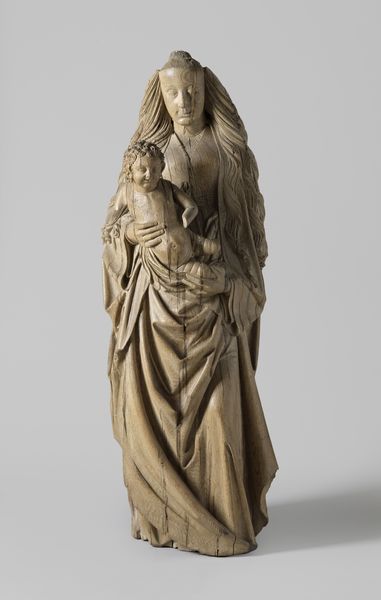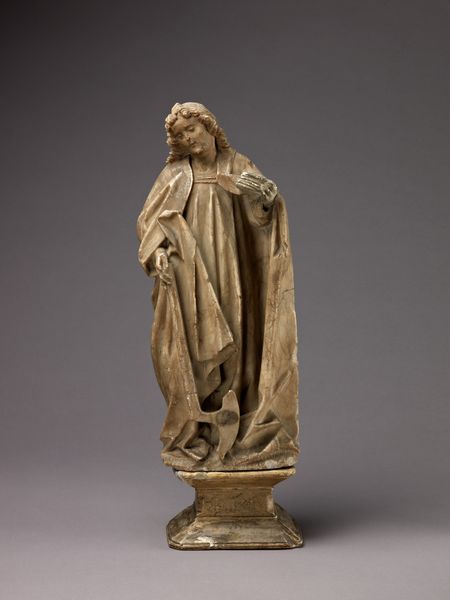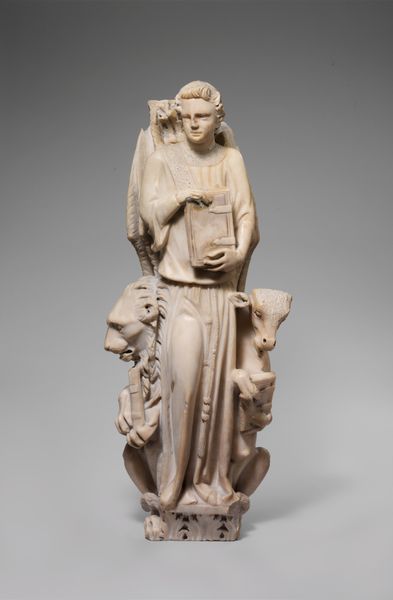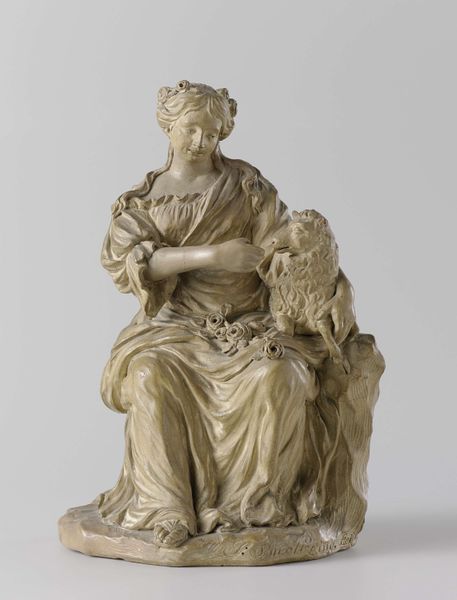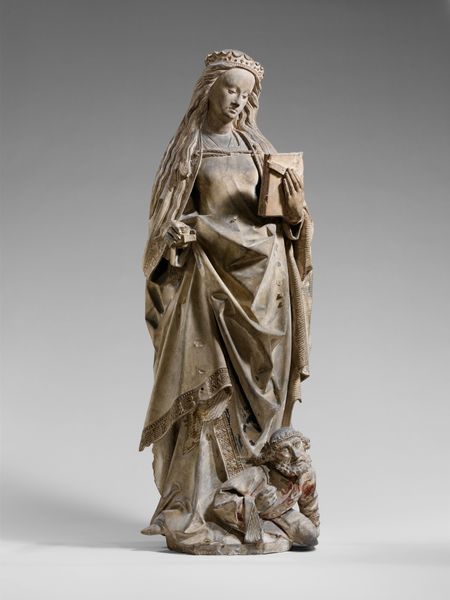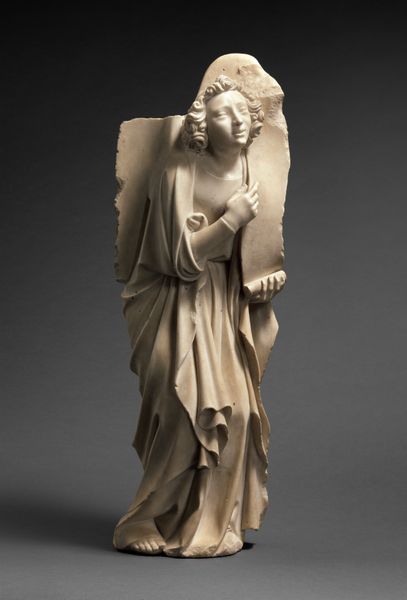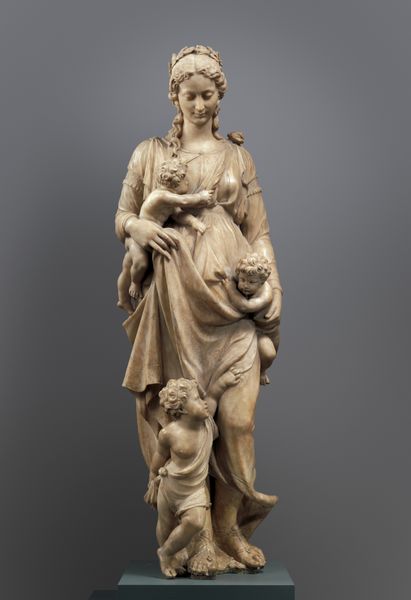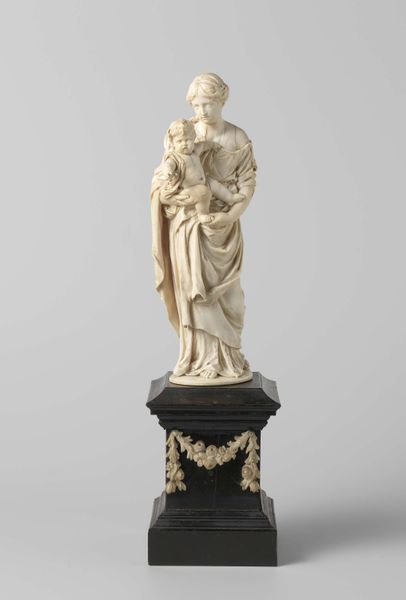
sculpture, wood
#
portrait
#
medieval
#
sculpture
#
gothic
#
figuration
#
sculpture
#
wood
#
history-painting
#
northern-renaissance
Dimensions: height 39.5 cm, width 40.5 cm
Copyright: Rijks Museum: Open Domain
Tilman Riemenschneider carved this Annunciation scene from limewood in the late 15th or early 16th century. The choice of limewood was crucial. Its fine grain allowed Riemenschneider to achieve a remarkable level of detail, especially in the flowing drapery and delicate curls of the angel's hair. The wood's relative softness also made it ideal for carving such intricate forms. Riemenschneider's workshop system would have been crucial to the making. He likely employed assistants to rough out the basic shapes, reserving the finer details for his own hand. This division of labor was typical of the period, reflecting a complex social and economic structure within the art world. The unpainted surface is also significant. It reflects a shift in taste away from the brightly colored, gilded sculptures of earlier times, towards a more restrained aesthetic that emphasized the natural beauty of the material and the skill of the carving. Considering the material and processes used reveals much about the skills, traditions, and social context of its creation, and challenges traditional distinctions between fine art and craft.
Comments
rijksmuseum over 2 years ago
⋮
Tilman Riemenschneider, one of the most important German sculptors of the late Middle Ages, created a highly original version of The Annunciation here. The angel Gabriel, whose drapery billows out as he flies down, is dynamic and full of vitality, contrasting with the Virgin’s subdued emotion. Petrified and taken completely by surprise, she stares into space while closing her book.
Join the conversation
Join millions of artists and users on Artera today and experience the ultimate creative platform.
